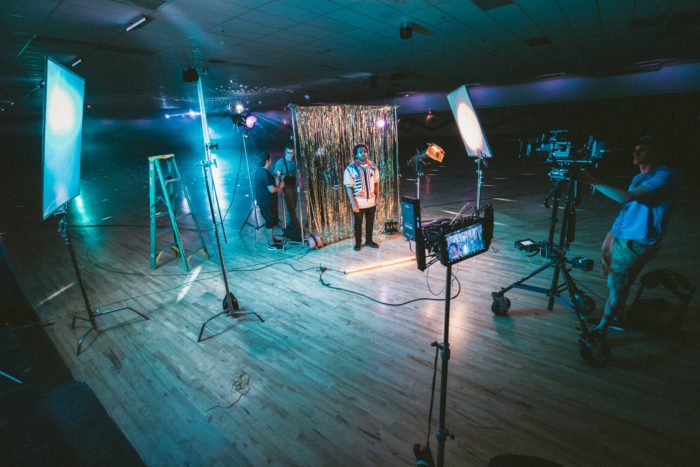Be authentic. You’ve heard the advice before. It seems like every marketing expert is offering it as the latest key to marketing success.
Some interpret that advice as reason to release raw, unscripted, or low budget videos. But authentic doesn’t have to mean low quality. On the flip side, high production quality doesn’t have to mean you’ve abandoned authenticity.
You can create videos that authentically represent your brand while maintaining high production quality standards. It shouldn’t be a case of authenticity versus production quality. Instead, think about how you can combine the two to create truly impactful marketing videos.
What Is Authenticity?
The call to be authentic is so pervasive that authenticity has almost become a buzzword. You hear it in the context of personal relationships, business leadership, and even marketing. People have lost sight of what the word actually means. More often than not, the word authentic is understood in terms of its opposite. To be inauthentic is to be fake, superficial or unnatural. So to be authentic, is to be real, deep or natural.
In video marketing, brands often try so hard to be authentic that production quality falls by the wayside. In their effort to be open, honest and spontaneous, they forget to ask themselves if low production values, unscripted videos, and shaky cam accurately represent their brand. Or are these characteristics an attempt to fit the model of “authenticity” others have created.
The irony is that trying so hard to fit a predetermined mold for authenticity can actually make you seem inauthentic. For individuals, being authentic means being yourself. The same is true in marketing. Being authentic really just means being true to your brand.
Why Authenticity Matters
Authenticity isn’t just a good quality to have, it’s vital to the success of your marketing strategy. According to Social Media Today, 90% of Millennials say authenticity is important to them in making purchasing decisions. Lest you think that only idealistic young people care about authenticity, 80% of Baby Boomers felt the same.
Bombarded by more and more advertising everyday, people are becoming immune to false promises and fancy sales tricks. If you really want your message to resonate, you have to offer something that feels true, real, and honest. In short, authentic.
If you want people to watch your videos and subsequently spend their money on what you’re offering, you can’t just sell a product or service. You have to build a relationship.
It might seem like people buy based on logic or facts: i.e. this product is less expensive, more reliable, or has better features. In reality, most people make purchasing decisions based on emotion and only later rationalize those decisions with facts. With authenticity, you help customers bond emotionally with your business.
Understand Your Brand
You can’t be authentic unless you know your brand. Most people have the basics down. They know their brand colors and have settled on fonts, logos, and taglines. That’s a great start, but creating authentic brand videos means going deeper.
Think about what your brand represents. If you’re a life insurance agency, for example, a casual unscripted video may not be an authentic representation of your brand. Your job is to provide people with something to depend on in a time of uncertainty. Can you convey that message with a video that doesn’t even have a script? Probably not.
In short, if recording on your phone makes you cringe, don’t do it. It probably doesn’t represent your brand.
How To Be Authentic In Video Marketing
Frank Tortorici, Senior Strategist, Media Relations at Marketing Maven had this to say about authenticity in video marketing:
“Brand videos should be driven by authenticity. If the story you’re delivering is simply a vehicle to highlight a price point or to sell a product, your audience will recognize it and turn away. Making videos that highlight brand principles and that tell authentic stories will always engender positive responses.”
Instead of trying to mimic authenticity by using your phone camera or going off script, create videos that convey your values and show the viewer who you are. These four principles will help you get started:
Be Original
Don’t try to copy anyone else’s model. The biggest barrier to authenticity is trying to replicate someone else’s success. If a competing brand did well with an animated video of a snarky salamander, that doesn’t mean you need to fire back with a sarcastic snake animation.
Be Real, But Don’t Be Boring.
People love to see behind the scenes. They want to know what your business is really about and who makes things happen. These elements are authentic. But be careful, getting too lost in the detail can bore your audience.
Tell Stories.
Stories light up the human brain in a way nothing else can. When you tell someone a story, you invite them into your world. Telling stories in your marketing videos can help you capture and keep the attention of an audience. If those stories are true stories about your team or your clients, your authenticity will shine through.
Keep It Simple
Flashy graphics, overproduced soundtracks, and theatrical characters can be distractions, not enhancements. If you’re adding something because it helps you tell the story, great. If you could remove it and still tell the story just as well, you’re probably better off without it.
Most importantly, remember: Authenticity is no excuse for poor technical quality. No matter how heartfelt or sincere your message, no one is going to listen if your audio quality is bad. And no matter how unique your video, no one is going to watch if it’s out of focus or low resolution. You should still use the best recording equipment you can for both sound and video.
In the battle of authenticity versus production quality, the only way to win is to call it a draw.






